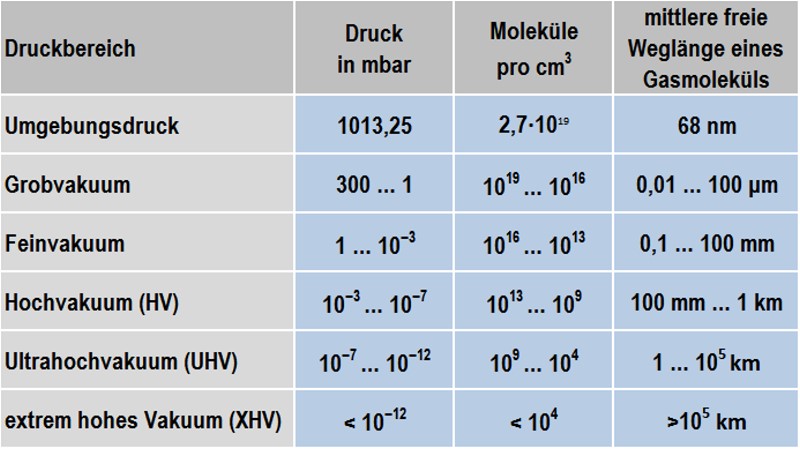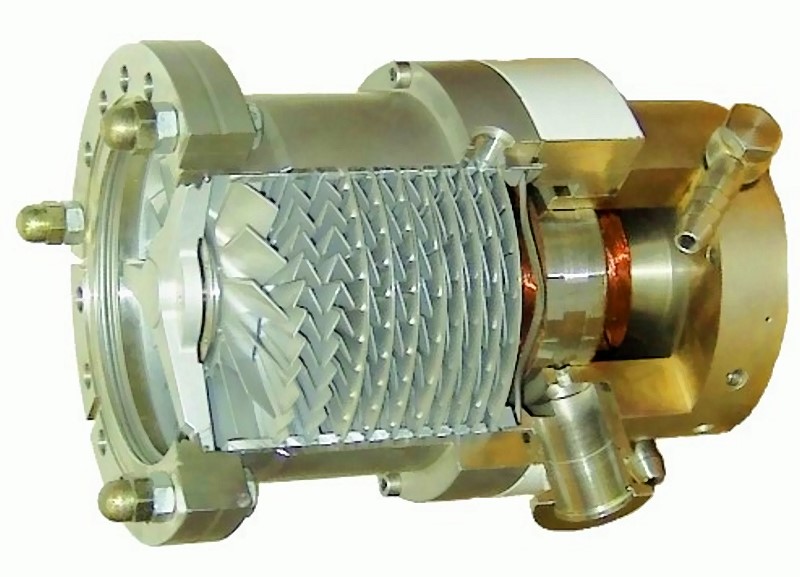Vacuum
The term vacuum (coming from the Latin word “vacuus” - empty) means empty room.
According to DIN 28400 part 1 (May 1990, Vakuumtechnik; Benennungen und Definitionen; Allgemeine Benennungen), vacuum is defined as follows: “Vacuum describes the state of a gas if the gas pressure and, consequentially, the particle-number density in a vessel is lower than outside or if the gas pressure is lower than 300 bar, i.e. lower than the lowest atmospheric pressure on earth.”
Vacuum in technology and classic physics means the fluid state in a volume under a pressure which is significantly lower than the atmospheric pressure under normal conditions. Colloquially, vacuum is mainly used to describe a room without air (e.g. vacuum package). Extremely low absolute pressure is called high vacuum.
If the pressure in an evacuated vessel is much lower than the atmospheric pressure, the correct term would be “lowered pressure” or “reduced pressure”.
Pressure area characterization
Technical vacua can be created in different qualities. In technology, there is a distinction between different achieved vacuum qualities based on the remaining matter (Table 1). By default, pressure is indicated in Pascal (Pa) or millibar (mbar).
Application in casting technology
A vacuum is created through extraction by special vacuum pumps (Fig. 1). A vacuum is used in many casting techniques especially to prevent oxidation and accommodation of atmospheric gases and/or to remove dissolved gasses from liquid metals such as:
- Molds: Vacuum molds (sand casting)...
- Mold sandcooling: Vacuumsandcooling...
- Melting and melt metallurgy of titan, steels, oxygen-affine metals and alloys: Vacuum induction furnaces, vacuum oxygen refining, vacuum electric arcs...
- Casting: Vacuum block casting, vacuum difference die casting, Vacumelt process, vacuum die casting (see e.g. Multi-stage vacuum process, VDS SA Vacuum Diecasting Service vacuum machinery), Vacural process...
- Heat treatment: Hardening, tempering, nitriding (nitration hardening) and carburizing, homogenization annealing, vacuumhardening, electron beam hardening...
- Liquid metal and alloy degassing: Vacuum heating degassing, VAD process, Vacuum induction degassing (VID process), vacuum pan degassing (VD process) vacuum fixed and continuous degassing...
- Melting control: Low-pressure density test, density index determination, vacuum ...
- Measuring technology: Electron microscope, scanning electron microscope...
Literature references:
DIN 28400-1990, Part 1, Vacuum technology; terms and definitions; general terms, Deutsches Institut für Normung e.V.
Kramer C., Mühlbauer A. (eds.), Praxishandbuch der Thermoprozesstechnik, Vol. I, Vulkan-Verlag Gmbh, Essen, 2002.
de.wikipedia.org/wiki/Vakuum



